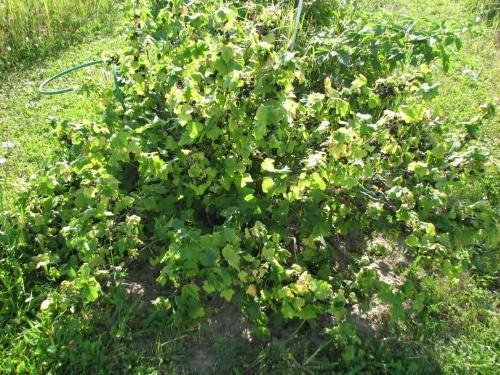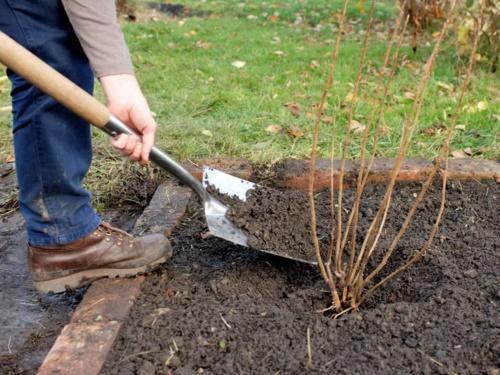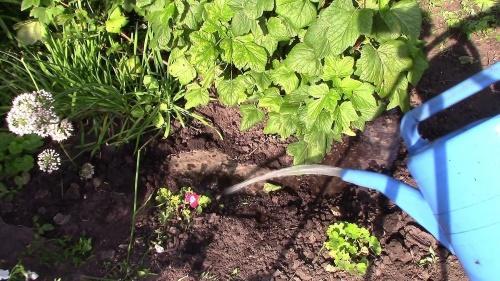All about how to care for currants
 Currant is one of the most popular crops and grows in almost every site. Why not, because the plant is quite unpretentious and independent. She hibernates well and, even without the participation of the gardener, actively grows a lush crown. However, do not forget that currants are not grown in order to admire the green foliage. If you want to harvest bountiful berries every year, it is important to know how to care for currants. Correctly and timely carried out measures are a guarantee of not only good fruiting, but also a healthy bush.
Currant is one of the most popular crops and grows in almost every site. Why not, because the plant is quite unpretentious and independent. She hibernates well and, even without the participation of the gardener, actively grows a lush crown. However, do not forget that currants are not grown in order to admire the green foliage. If you want to harvest bountiful berries every year, it is important to know how to care for currants. Correctly and timely carried out measures are a guarantee of not only good fruiting, but also a healthy bush.
So what does a currant need? The list of works will be short, but no less responsible for this, namely:
- tillage of the soil around the bush;
- watering;
- seasonal feeding;
- pruning.
Let's consider each item in more detail.
Maintaining cleanliness under the bush

Since currant roots are superficial, it is better to loosen it not near the shoots themselves, but retreating a little. The same applies to the digging of the trunk circle.
The need for currants in moisture
 Regardless of the species, all currants love water and, when it is deficient, gives a meager harvest. Therefore, it is necessary to ensure that the ground under the bush does not dry out. In the spring, there is enough moisture in the soil and the plants still do not need frequent watering. However, with the beginning of fruiting, when the berries are tied and ripen, the requirements for watering also grow. During this period, it is necessary to regularly water the bushes at least once a week.
Regardless of the species, all currants love water and, when it is deficient, gives a meager harvest. Therefore, it is necessary to ensure that the ground under the bush does not dry out. In the spring, there is enough moisture in the soil and the plants still do not need frequent watering. However, with the beginning of fruiting, when the berries are tied and ripen, the requirements for watering also grow. During this period, it is necessary to regularly water the bushes at least once a week.
Mulch the near-trunk circle - then you will need to water less often, and there will be no weeds.
How and when to fertilize?
 During the growing season, the currants must be fed at least 4 times:
During the growing season, the currants must be fed at least 4 times:
- In early spring, before the buds swell - with nitrogen fertilizers (ammonium nitrate, urea).
- At the beginning of summer - organic matter (wood ash, manure or herbal infusion). This can be done every 2 weeks before harvesting.
- At the end of summer, after harvesting berries - phosphorus-potassium fertilizer (potassium sulfate, superphosphate).
- In the fall, under digging, repeat the saturation of the bushes with phosphorus and potassium, adding superphosphate and potassium chloride.
Every three years, humus is added under the currants.
How to care for currants - pruning rules
 Since the bushes actively form new shoots every year, it is important to regulate their growth, because the thickened plant will produce fewer berries. Currant pruning can be carried out both in autumn and spring, provided that it is still or is already at rest. The essence of pruning is as follows:
Since the bushes actively form new shoots every year, it is important to regulate their growth, because the thickened plant will produce fewer berries. Currant pruning can be carried out both in autumn and spring, provided that it is still or is already at rest. The essence of pruning is as follows:
- in the first year of planting, the seedlings are strongly trimmed, leaving up to 2 buds;
- in the second year, the tops of young shoots are cut off;
- from 5-6 years of age, a couple of old, fruiting shoots are annually cut out, leaving young "zero" branches (growing from the ground) instead;
- you also need to periodically trim all dry, sick and growing in the crown or down branches.